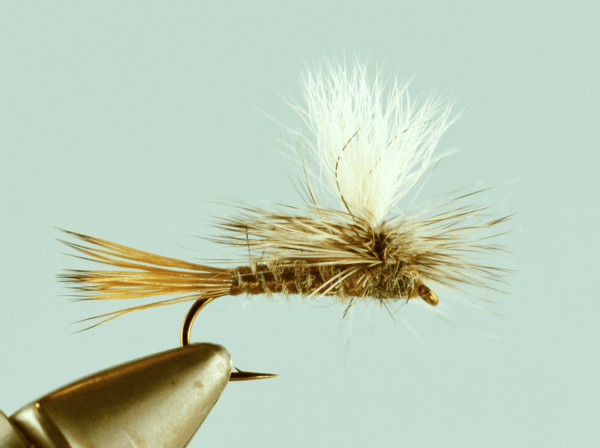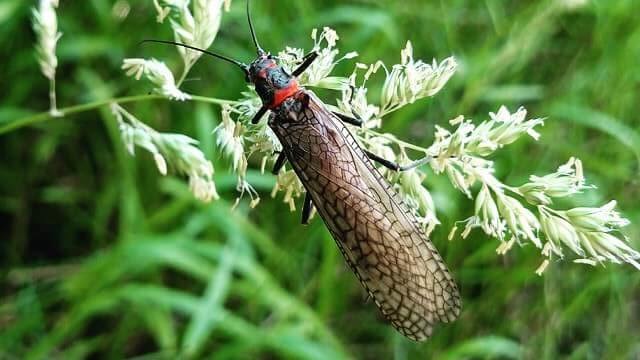Dry Fly Fishing

It is our guess that more has been written on dry fly fishing than on all other phases of trout fishing combined. The visual aspect of fish coming to the surface to feed, where you can see them, and cast to them, has fascinated fishermen for centuries. From the first fly fishing writings by Dame Julianna Berners in the 1400’s to the DVD of those crazy guys running down the beach after roosterfish in Running Down The Man, fish at the surface just seem to get a lot of people excited.
Selecting Dry Flies
So let’s stay with the idea of what fly to use. Here is a concept we try to get across to fly tyers, but it is important to fly fishermen as well. The only constant in fly selection is the insect. A Green Drake is always (at least for our purposes, as there are always very minor differences) 15mm long, in a pale green body with a mottled brown wing. There are a lot of dry flies out there that imitate the Green Drake, as a trip into any fly shop will tell you. Why would there be so many different dry flies available? If we are imitating a specific insect, wouldn’t it make sense that there would be a penultimate imitation for each insect, an imitation that would always work? That would make sense, but we can tell you it is not the case.
What works one day does not necessarily work the next. We have looked and studied, and have talked to a lot of other people who look and study on a daily basis, and no one can figure out from one day to the next why one fly imitation works while another doesn’t. This is the reason for carrying different variations on the same theme, so that you have the fly they are looking for. Each imitation creates a different “pattern”, if you will, on the surface film. Some days the fish want a low floating dry fly pattern, and the next day they want one that is high floating, or a specific shape, or something in between. Again, we have looked and looked to find a reason for this differentiation in patterns from day to day- temperature, sun or shade, barometer, horoscope, and we cannot find one. Wish we could, it would save a lot of trouble.
We also carry multiple patterns of the same insect for another reason. Often you will cast to a fish that begins rising to your fly, and then stops and returns to its feeding station. Why it stopped? Did the fly start to drag? Did it just decide not to take it? No clue, but we do know this. Once a good fish (10″ or longer) has refused on a fly, it will rarely take that same fly on a later cast. But the fish has shown an interest in feeding, that’s why it started rising. So change flies to a different imitation of the same insect, and try again. Change the fly to give the trout a different look, and that works quite well for many anglers.
When describing dry flies you will often hear these terms. Dun, emerger, cripple or spinner- Drowned, damp or dry? Nowhere in the water column is there more variance in insects than in the surface film and surface. Take the mayfly. It rises to the surface as a nymph until it hits the meniscus. At the meniscus, it starts to emerge from its exo-skeleton, as an emerger. If it is un-successful in its emergence, it becomes a cripple. If it emerges as an adult, it becomes a dun. But, as an emerged adult, it can be blown over, not fully expand its wings or face other pitfalls. So an unsuccessful dun emergence becomes a cripple, but a different looking cripple than the emerger not getting through the meniscus. And then, as their lives end, mayflies return to the water as spinners. So you have floating nymphs, emergers, crippled emergers, duns, crippled duns and spinners. And remember, some of this adult/cripple fly information applies to stoneflies and caddisflies as well, though not as completely.
That can be a frightening thought. Just how many flies do you need to imitate one species? Well, don’t panic yet. Here are a couple of things to think about. One, you can tie on your favorite representation of the insect, and just keep moving and casting it to different fish until you find one that will eat your dry fly. That works, and works fairly well. And this is just as important. It takes a lot of insects on the water to get a fish to focus on a specific phase. Remember, fish feed to grow larger, and the more bugs they eat, the faster they grow. So there has to be enough insects on the water for a fish to focus on a specific phase without losing caloric intake. As said before, it takes a lot of bugs to create that situation. Most of the time, when fish feed on the surface, they eat the available insects in just about any phase they can get them. There’s people who never take off a parachute style fly, and they do just fine. So don’t lose your mind when people start talking about hatch phases, and how many imitations they have. Just pick a good basic imitation of the insect that’s on the water, and fish it with confidence. Confidence will normally take you further than a lot of different patterns.
Now we get into more random thoughts on dry flies. Remember that more than one type of insect can be on the water at one time. A perfect example is the Tan Caddis and the Pale Evening Dun. Both appear at Dusk in late June, July and early August in this area. You have 2 options. Pick a fish, and change flies till you catch it. Or pick a fly, and start wandering around until you find a fish that will eat your fly. Both are valid, though often you will find the second technique easier and less frustrating. But if the rising fish is big, then it is option one all the way!
Attractor flies are very prevalent in dry fly fishing. Going back to the thrill of surface fishing theory, people want to see a fish rise, and will often fish a dry when no fish are rising. So they create hopeful flies that, although they are not close imitations of anything, will cause a fish to think they are food and then rise. One of the most famous in our area is John Perry’s Bugmeister. A parachute fly with a down wing and peacock body, it proves its worth from March through October. It is not a specific imitation of anything, but it looks enough like food to a trout that it will be eaten all season. But not all attractors are anywhere near as effective. There are many flies that have proven to be spectacularly non-effective.
Rise Forms
Just because you see a fish come to the surface does not mean the fish is taking a fly from the surface. There are many times that a fish will come just to the surface, and then break the surface with their backs. Which looks like a rise, but isn’t. The fish is taking an insect just under the surface, not an insect from the surface. One tip that a fish is taking a fly off the surface is a tell-tale bubble or two after the rise. When the fishes snout comes out of the water to take an insect, it also takes a little air down as well, which comes back up as the fish returns to its feeding station. Another very distinctive rise form is to a spinner. These are extremely subtle rises, causing very little disturbance to the water. Once seen and identified as a spinner rise, they are easily recognized as such again. Contrast that with a rise to a caddis fly, which is often splashy, due to the speed that a caddis comes to the surface and emerges. Take a good look at the rise forms that you see on the river, they will tell you a lot about how the fish is feeding.
Dry Fly Permutations
Frederic Halford, Britain’s Father of the Dry Fly. fished (upstream only), flies that floated above the surface of the water. In fact, when it was proven that Halford’s favorite fly, the dry Hare’s Ear was actually a damp fly (it floated in the surface film, not on the surface), he stopped fishing it. How times have changed. With advent of insect knowledge, and a less rigorous determination of what constitutes a dry fly, we fish flies in the film and just below the film. Detailed observation of insects has proven that trout will often focus on emerging insects, and cripples. Cripples are defined as nymphs that un-successfully transformed into adults. The difference between an emerger and a cripple, from an imitative aspect, is very little.The emerger becomes a cripple in the space of a heartbeat, and both are imitated by a fly floating in the film.
Dry Fly Snobbery
The British are to blame for this. Frederic Halford and G.E.M. Skues had spirited debates in the sporting magazines of England in the 20’s and 30’s. As the lure of the dry fly captured the imagination of the angler, the nymph fell into dis-favor, to a point where on many of the chalk streams of England, the only acceptable method of fishing was upstream, to rising fish. Period. On sections of the River Test, to this day, that is the only acceptible way to fish. So you pay your rod fee, and if there are no rising fish that day, you don’t cast. End of discussion. For years, Halford’s favorite fly was the dry Hare’s Ear, a fly with upright and divided wings, brown tail and hackle, and a shaggy Hare’s Ear body. But when it was proven that the Hare’s Ear actually floated in the surface film, making it a “damp” fly, he stopped fishing it. Dry fly snobbery indeed.
